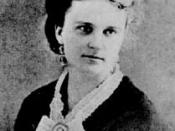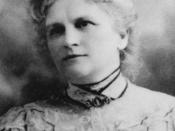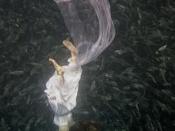Kate Chopin's "The Story of an Hour" appears merely to explore a woman's unpredictable reaction to her husband's assumed death and reappearance, but actually Chopin offers Mrs. Mallard's bizarre story to reveal a problem that was inherent in the institution of our society. By offering a depiction of a marriage, a woman comes to the point where she celebrates the death of her kind and loving husband. Is this celebration humane? Chopin challenges her readers, through irony, to examine why this celebration is humane and also how important freedom truly is to all of God's creatures. Are all of God's creatures created equal or should there be a separation between them?
In the early 1900s, marriage was comparable to a master-and-slave relationship. The role of the woman in the marriage was minimal. The woman's place was in the house, caring for the children, cleaning the house, and doing other "womanly" tasks.
Chained to their husbands, marriage became prison to many women; the only means of breaking free from these bonds was the death of a husband.
Chopin's story indirectly shows this type of imprisonment in marriage. When Louise is told the horrible news about the death of her husband, one living in this life time would expect her to obviously be devastated by this news, but strangely she is not. She accepts the news and then goes to her room to be alone. The reader then starts to see the world through Louise's eyes, a world full of new and pure life. In her room, Louise sinks into a comfortable chair and looks out her window. Immediately the image of comfort seems to strike an odd note. One reading this story should question the use of this word "comfortable" and why Louise is not beating the furniture instead. The...


